Toyota C-HR VS Vauxhall Combo Cargo – Specs, Efficiency & Price Comparison
Which model is the better choice – the Toyota C-HR or the Vauxhall Combo Cargo? We compare performance (223 HP vs 136 HP), boot capacity (447 L vs ), efficiency (0.80 L vs 17.40 kWh5.20 L), and of course, the price (29100 £ vs 22400 £).
Find out now which car fits your needs better!
The Toyota C-HR (SUV) is powered by a Full Hybrid or Plugin Hybrid engine and comes with a Automatic transmission. In comparison, the Vauxhall Combo Cargo (Cargo Van) features a Diesel, Petrol or Electric engine and a Manuel or Automatic gearbox.
When it comes to boot capacity, the Toyota C-HR offers 447 L, while the Vauxhall Combo Cargo provides – depending on what matters most to you. If you’re looking for more power, you’ll need to decide whether the 223 HP of the Toyota C-HR or the 136 HP of the Vauxhall Combo Cargo suits your needs better.
There are also differences in efficiency: 0.80 L vs 17.40 kWh5.20 L. In terms of price, the Toyota C-HR starts at 29100 £, while the Vauxhall Combo Cargo is available from 22400 £.
Compare all the key specs now and find out which model fits your lifestyle best!
Toyota C-HR
The Toyota C-HR stands out with its distinctive and bold design that combines sleek, angular lines with a sporty posture. Its comfortable and stylish interior is equipped with advanced technology features, providing a seamless driving experience. The vehicle offers impressive handling and performance, making it a compelling choice for those who appreciate a blend of practicality and flair on the road.
details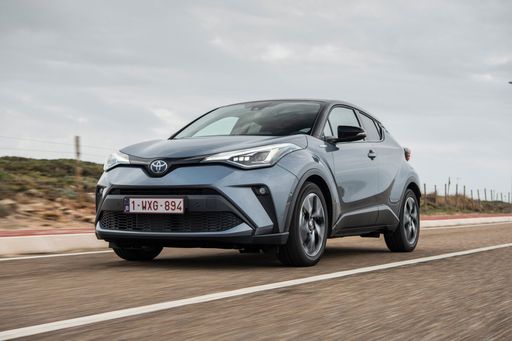 @ Toyota
@ Toyota
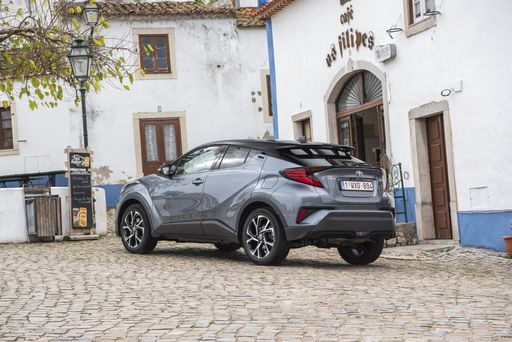 @ Toyota
@ Toyota
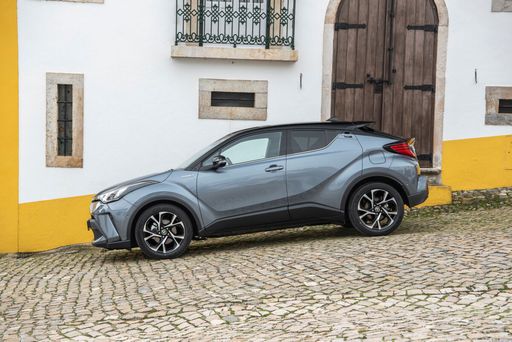 @ Toyota
@ Toyota
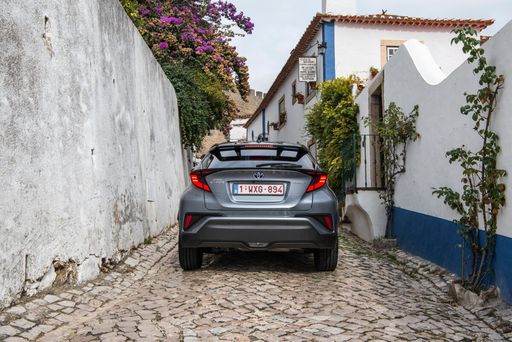 @ Toyota
@ Toyota
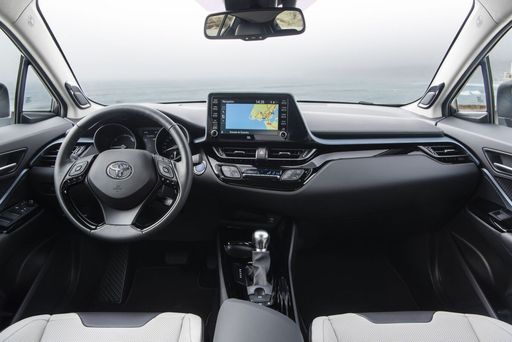 @ Toyota
@ Toyota
Vauxhall Combo Cargo
The Opel Combo van is a versatile and practical choice for both businesses and families, offering ample space and comfort. Its efficient design provides ease of manoeuvrability in urban settings, while also delivering a smooth and reliable performance on longer journeys. The interior is thoughtfully equipped with modern features, ensuring a convenient and enjoyable driving experience.
details

|
|
|
|
|
Costs and Consumption |
|
|---|---|
|
Price
29100 - 42800 £
|
Price
22400 - 34700 £
|
|
Consumption L/100km
0.8 - 5.1 L
|
Consumption L/100km
5.2 - 6.3 L
|
|
Consumption kWh/100km
-
|
Consumption kWh/100km
17.40 kWh
|
|
Electric Range
68 km
|
Electric Range
354 km
|
|
Battery Capacity
-
|
Battery Capacity
-
|
|
co2
17 - 115 g/km
|
co2
0 - 143 g/km
|
|
Fuel tank capacity
43 L
|
Fuel tank capacity
53 - 61 L
|
Dimensions and Body |
|
|---|---|
|
Body Type
SUV
|
Body Type
Cargo Van
|
|
Seats
5
|
Seats
2 - 6
|
|
Doors
5
|
Doors
4 - 5
|
|
Curb weight
1505 - 1755 kg
|
Curb weight
1329 - 1813 kg
|
|
Trunk capacity
350 - 447 L
|
Trunk capacity
-
|
|
Length
4362 mm
|
Length
4401 - 4751 mm
|
|
Width
1832 mm
|
Width
1848 mm
|
|
Height
1558 - 1564 mm
|
Height
1820 - 1825 mm
|
|
Payload
375 - 425 kg
|
Payload
611 - 991 kg
|
Engine and Performance |
|
|---|---|
|
Engine Type
Full Hybrid, Plugin Hybrid
|
Engine Type
Diesel, Petrol, Electric
|
|
Transmission
Automatic
|
Transmission
Manuel, Automatic
|
|
Transmission Detail
-
|
Transmission Detail
Schaltgetriebe, Automatikgetriebe
|
|
Drive Type
Front-Wheel Drive, All-Wheel Drive
|
Drive Type
Front-Wheel Drive
|
|
Power HP
140 - 223 HP
|
Power HP
102 - 136 HP
|
|
Acceleration 0-100km/h
7.4 - 9.9 s
|
Acceleration 0-100km/h
11.20 s
|
|
Max Speed
175 - 180 km/h
|
Max Speed
135 - 183 km/h
|
|
Torque
-
|
Torque
205 - 300 Nm
|
|
Number of Cylinders
4
|
Number of Cylinders
3 - 4
|
|
Power kW
103 - 164 kW
|
Power kW
75 - 100 kW
|
|
Engine capacity
1798 - 1987 cm3
|
Engine capacity
1199 - 1499 cm3
|
General |
|
|---|---|
|
Model Year
2024 - 2025
|
Model Year
2024
|
|
CO2 Efficiency Class
C, B
|
CO2 Efficiency Class
E, A
|
|
Brand
Toyota
|
Brand
Vauxhall
|
Toyota C-HR
Revolutionising the Crossover Segment: The Toyota C-HR
The Toyota C-HR has firmly established itself as a standout contender in the compact crossover segment. Known for its distinct design and hybrid capabilities, the C-HR continues to prioritise innovation and efficiency. In this article, we delve into the technical details that make the 2024 iteration a compelling choice for discerning buyers.
Distinctive Design and Aerodynamics
The Toyota C-HR boasts a striking design that combines angular lines with modern aesthetics. This isn't merely for show; the design enhances aerodynamics, improving fuel efficiency and handling. With dimensions of 4362mm in length and a sophisticated structure, the C-HR strikes a balance between urban agility and on-road stability.
Impressive Hybrid Powertrains
The C-HR lineup offers innovative hybrid and plug-in hybrid drivetrain options. The full hybrid system is tailored for those who seek both economic and environmental benefits. It combines a petrol engine with an electric motor to deliver power outputs ranging from 140 to 223 PS, achieving remarkable fuel consumption rates from 0.8 to 5.1 L/100km. The 2.0 Plug-In Hybrid variant impresses with an electric range of 67 km, ideal for urban commuters.
Unmatched Efficiency and Performance
Acceleration figures for the C-HR range from 7.4 to 9.9 seconds to reach 0-100 km/h, ensuring a responsive driving experience. Maximum speeds between 175 and 180 km/h cater to those who appreciate a bit of zest on the open road. Coupled with CVT automatic transmission and both front-wheel and all-wheel-drive configurations, the C-HR adapts to various driving conditions with ease.
Advanced Technology and Features
Inside, the C-HR is equipped with the latest technology aimed at providing connectivity and comfort. The model hosts an array of features across its diverse trim levels, including Business Edition, Lounge, and the sporty GR SPORT. Each variant is designed to meet the demands of different lifestyles, ensuring there's a C-HR model to suit every taste.
Sustainability and Cost Efficiency
With CO2 emissions ranging from 19 to 115 g/km, the C-HR stands as a testament to Toyota's commitment to sustainability. Financially savvy consumers will also appreciate the running cost, with monthly expenses from €959 to €1204, and a cost per km as low as 38.4 cents. Such efficiency makes the vehicle an attractive option for eco-minded buyers.
Conclusion: A Forward-Thinking Choice
The 2024 Toyota C-HR embodies Toyota's forward-thinking approach to automotive innovation, blending eco-friendly hybrid technologies with stylish design and practicality. It offers a glimpse into the future of driving, where efficiency meets elegance. Whether you're a city dweller or an adventure seeker, the C-HR promises a driving experience that is both enjoyable and environmentally conscious.
Vauxhall Combo Cargo
Discovering the Opel Combo: A Compact Van with Big Capabilities
The Opel Combo is a standout in the realm of compact vans, offering a blend of practicality, efficiency, and advanced technology. Whether you are a small business owner in need of a reliable transport solution or an eco-conscious driver looking for a green alternative, the Opel Combo has something to offer. Let's delve into the technical details and innovations that make this van a noteworthy contender in its class.
Engine Options: Flexibility Meets Efficiency
The Opel Combo boasts a wide range of engine options to cater to various driving needs. Available in both diesel and petrol, as well as electric versions, the Combo offers a versatile selection of powertrains. With engine power ranging from 102 PS to an impressive 136 PS, the Combo ensures that you have enough oomphto get the job done.
The diesel variants present efficient fuel consumption statistics, with figures between 5.4 to 5.9 L/100 km, ensuring fewer stops at the fuel station. Meanwhile, the electric models offer an attractive alternative with a range of 326 to 336 km on a single charge, emphasizing Opel's commitment to sustainable mobility.
Innovative Technology: A Step Forward
Innovation in the Opel Combo is not just limited to its engines. It incorporates state-of-the-art features designed to enhance the driving experience. Automatic transmission options provide smooth gear transitions, reducing driver effort and fatigue, especially in urban settings. A key technological highlight is the inclusion of advanced driver assistance systems which enhance safety and ease of use.
The Combo's infotainment system is equipped with all the modern connectivity options, making it easy for users to stay connected on the go. With intuitive controls and an ergonomic layout, the system enhances the overall driving experience by keeping essential functions accessible at all times.
Design and Practicality: Structured for Success
Opel has masterfully balanced form and function in the Combo's design. With a compact exterior measuring between 4401 to 4753 mm in length, the Combo is perfect for navigating urban environments without sacrificing cargo space. The van offers a generous payload capacity of up to 916 kg, demonstrating its ability to handle demanding logistical tasks.
Inside, the Combo provides comfort and practicality with seating configurations ranging from 2 to 6 seats. This flexibility makes it ideal for both goods transport and ferrying staff. With a maximum speed of up to 184 km/h, the Combo ensures timely deliveries while maintaining Opel's standard for safety and efficiency.
Environmental Considerations: Efficient and Responsible
The Opel Combo manages to balance power and environmental responsibility efficiently. CO2 emissions range from 0 for electric variants to a moderate 155 g/km for certain diesel configurations. These figures demonstrate Opel's dedication to reducing the environmental footprint of its vehicles.
Moreover, the Combo Electric models, with energy consumption as low as 18.6 kWh/100 km, prove that Opel is committed to offering cleaner, alternative fuel vehicles that meet modern environmental standards.
Conclusion: A Compact Van That Packs a Punch
The Opel Combo emerges as a versatile and innovative choice in the compact van segment, blending efficiency, technology, and practicality seamlessly. For those searching for a reliable partner in business or an eco-friendly transport solution, the Combo stands out as a compelling choice. With a price range that accommodates various budgets, the Opel Combo deserves serious consideration from anyone in need of a robust yet refined transport solution.
The prices and data displayed are estimates based on German list prices and may vary by country. This information is not legally binding.
